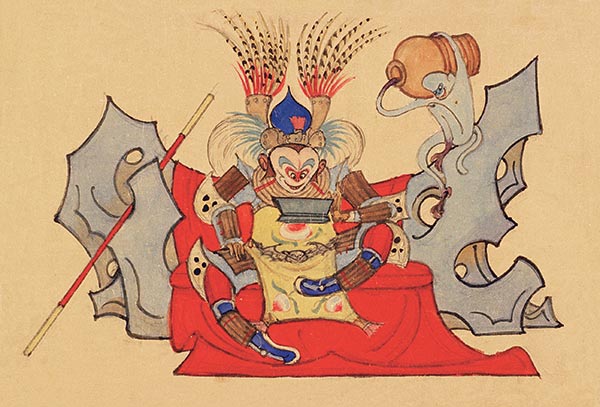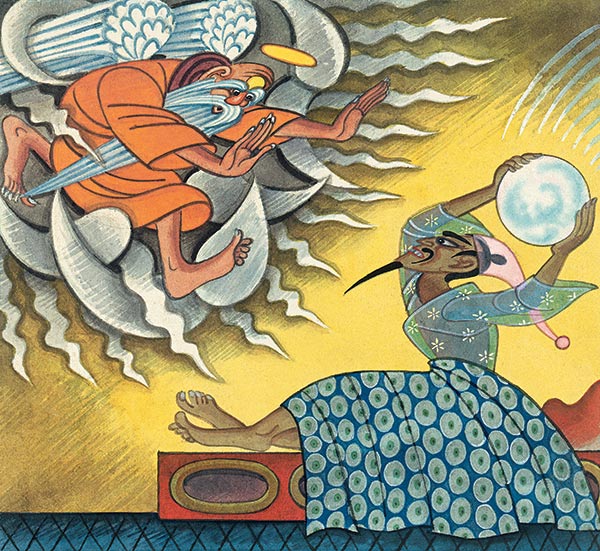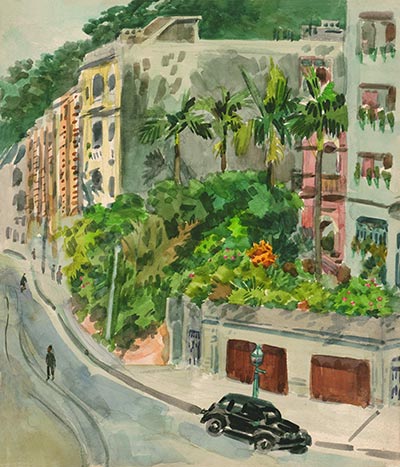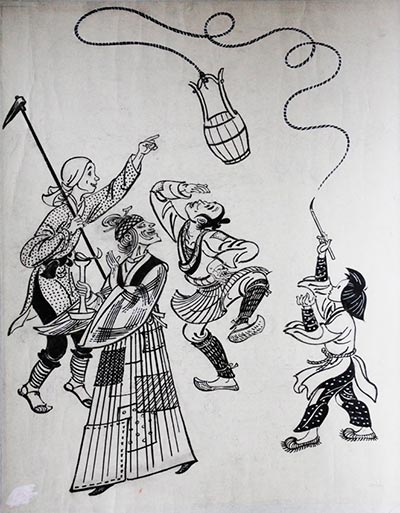Source: China Daily (12/15/15)
Remembering China’s ‘Walt Disney’
By Lin Qi(China Daily)

Zhang Guangyu was creative while painting with watercolors, and making illustrations and cartoons, as well as designing animation characters. [Photo provided to China Daily]
He was one of the founders of China’s first cartoon society. He pioneered China’s commercial art, authoring the country’s first book on modern industrial art in 1932. He published a dozen art journals which served as the launch pads for several artists who later became masters. His last major work was designing the characters and settings for the timeless 1960 classic animation film, Da Nao Tian Gong or Havoc in Heaven.
Yet the name of Zhang Guangyu (1900-65) is unknown to many who have seen his works and have also been influenced by them.
And it has taken five decades since his death for the first comprehensive exhibition of Zhang’s works to be held in China. On Nov 20, the show opened in Shanghai where the long-forgotten figure of modern Chinese art spent most of his life, developing his distinctive style. It runs through Dec 20.
Master of Chinese Modernism Art, the exhibition at the Long Museum, celebrates Zhang’s creativity and versatility in painting, illustration, design, publishing and animation.
A display of more than 300 of his works show how he helped Chinese art make the transition from the classical age to a modern world in the first half of the 20th century.

Zhang Guangyu was creative while painting with watercolors, and making illustrations and cartoons, as well as designing animation characters. [Photo provided to China Daily]
Born in Wuxi, East China’s Jiangsu province, Zhang took no interest in the family business of traditional Chinese medicine of his paternal side, or the private banking business of his maternal side.
After basic schooling in Shanghai, Zhang, at age 15, was exposed to a thriving, dynamic cultural landscape. There, he was nurtured and became a celebrated figure in the following decades.
Zhang stretched out one hand to Chinese folk art, while he offered the other to the art movements of Europe that were also closely followed in the cosmopolitan metropolis of Shanghai.
Zhang’s painting skills were self-taught and he gained his early inspiration from watching Peking Opera performers wear makeup backstage. He once lived close to a Peking Opera theater.
He was greatly inspired by Western art and industrial design while working at Shanghai’s art companies and in the advertisement departments of foreign tobacco companies in the 1920s.

Zhang Guangyu explored with continuous shooting by putting together dozens of his own photos. Taken in the 1930s, the images would be today’s selfies. [Photo provided to China Daily]

